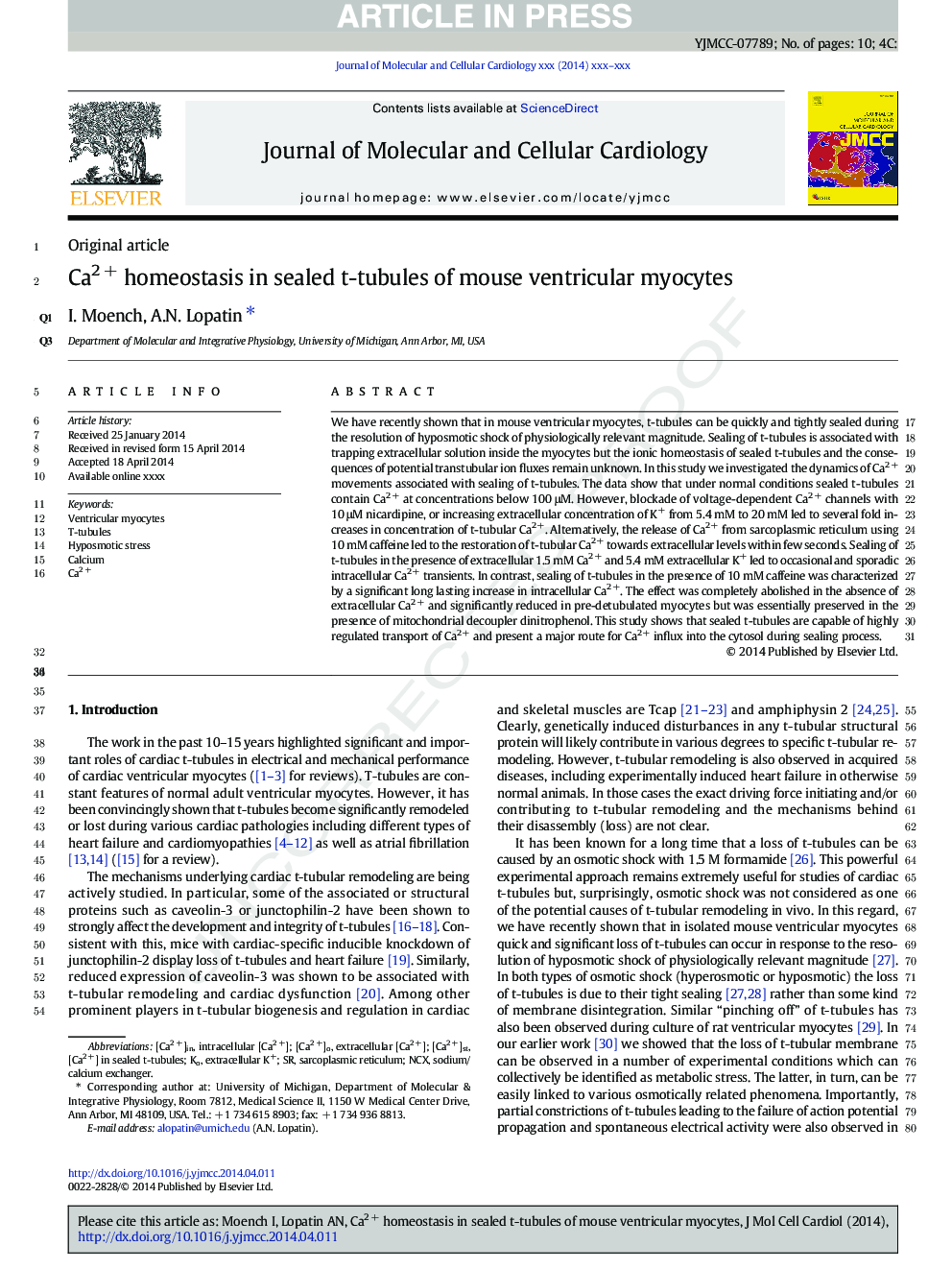| Article ID | Journal | Published Year | Pages | File Type |
|---|---|---|---|---|
| 8474889 | Journal of Molecular and Cellular Cardiology | 2014 | 10 Pages |
Abstract
We have recently shown that in mouse ventricular myocytes, t-tubules can be quickly and tightly sealed during the resolution of hyposmotic shock of physiologically relevant magnitude. Sealing of t-tubules is associated with trapping extracellular solution inside the myocytes but the ionic homeostasis of sealed t-tubules and the consequences of potential transtubular ion fluxes remain unknown. In this study we investigated the dynamics of Ca2 + movements associated with sealing of t-tubules. The data show that under normal conditions sealed t-tubules contain Ca2 + at concentrations below 100 μM. However, blockade of voltage-dependent Ca2 + channels with 10 μM nicardipine, or increasing extracellular concentration of K+ from 5.4 mM to 20 mM led to several fold increase in concentration of t-tubular Ca2 +. Alternatively, the release of Ca2 + from sarcoplasmic reticulum using 10 mM caffeine led to the restoration of t-tubular Ca2 + towards extracellular levels within few seconds. Sealing of t-tubules in the presence of extracellular 1.5 mM Ca2 + and 5.4 mM extracellular K+ led to occasional and sporadic intracellular Ca2 + transients. In contrast, sealing of t-tubules in the presence of 10 mM caffeine was characterized by a significant long lasting increase in intracellular Ca2 +. The effect was completely abolished in the absence of extracellular Ca2 + and significantly reduced in pre-detubulated myocytes but was essentially preserved in the presence of mitochondrial decoupler dinitrophenol. This study shows that sealed t-tubules are capable of highly regulated transport of Ca2 + and present a major route for Ca2 + influx into the cytosol during sealing process.
Keywords
Related Topics
Life Sciences
Biochemistry, Genetics and Molecular Biology
Cell Biology
Authors
I. Moench, A.N. Lopatin,
